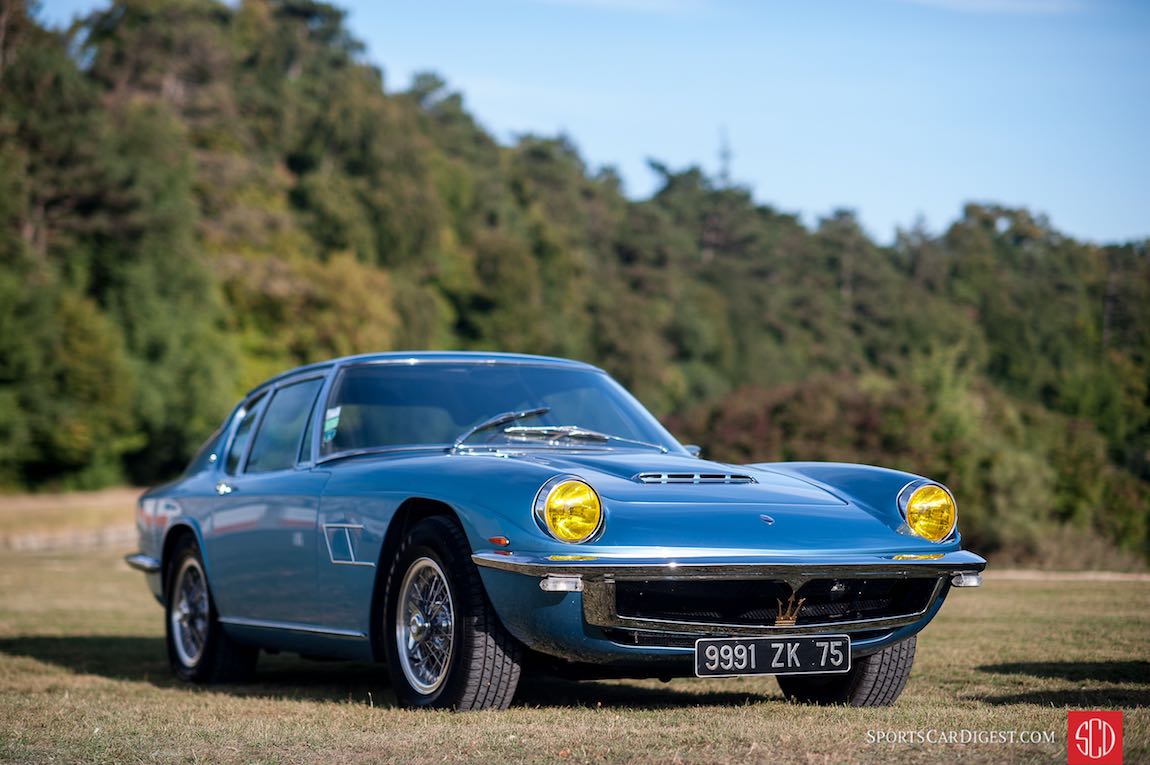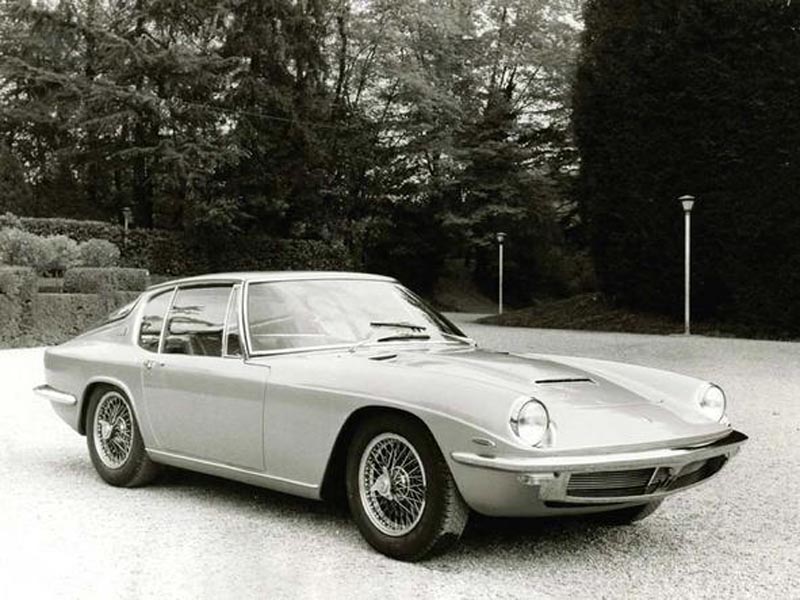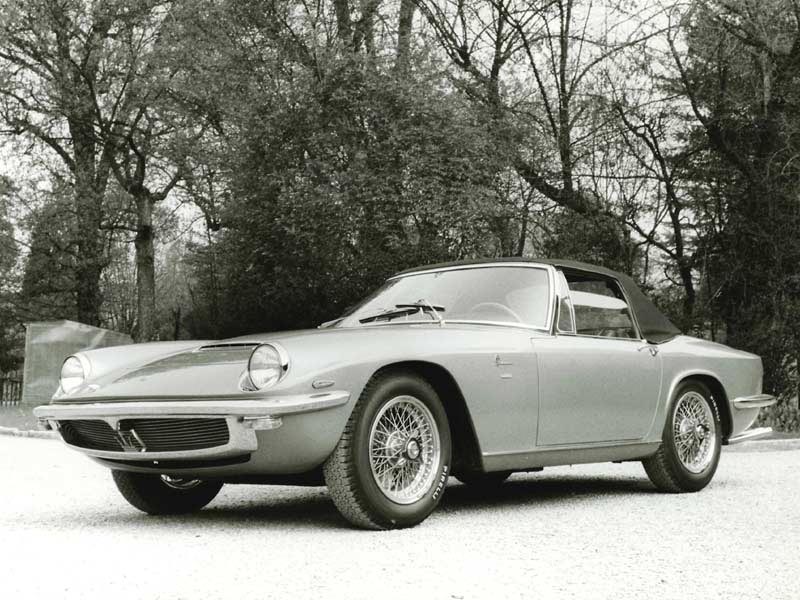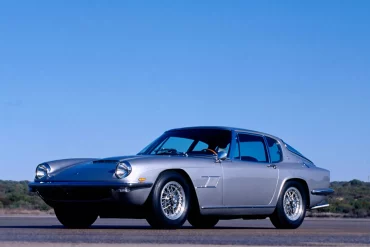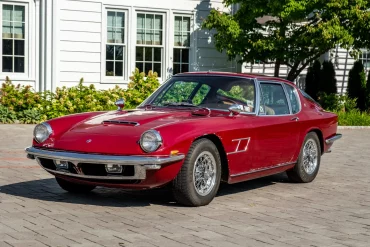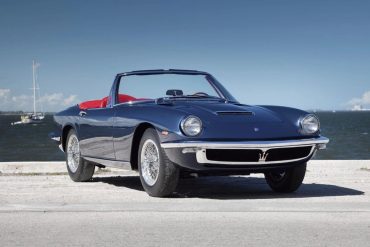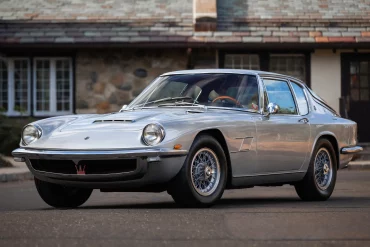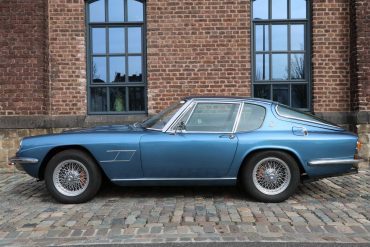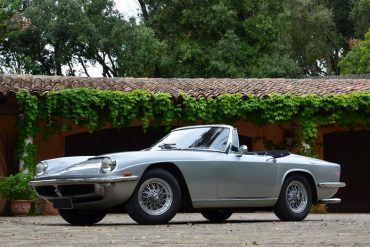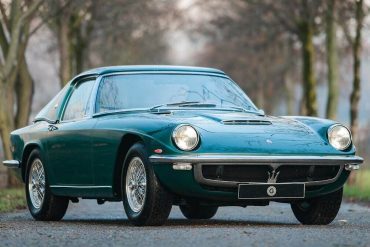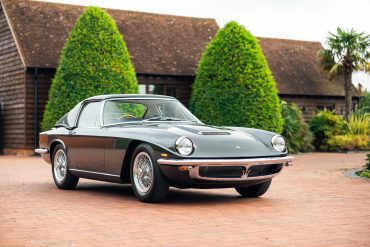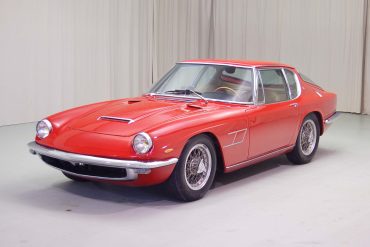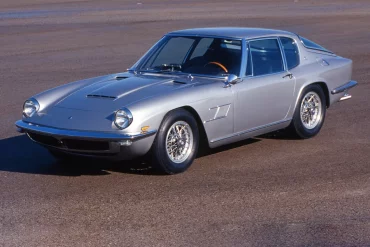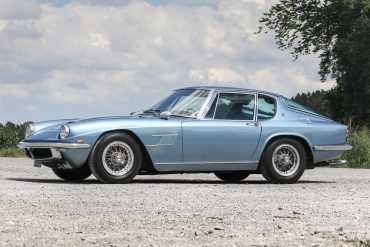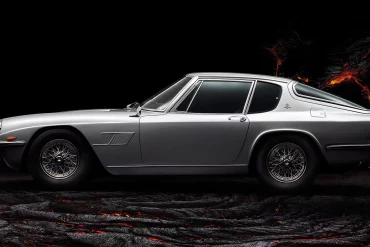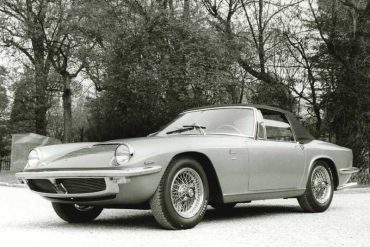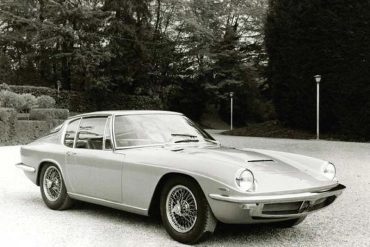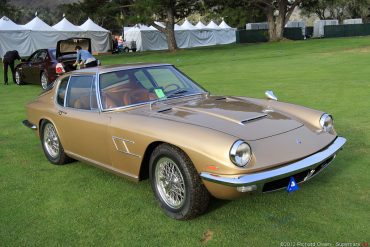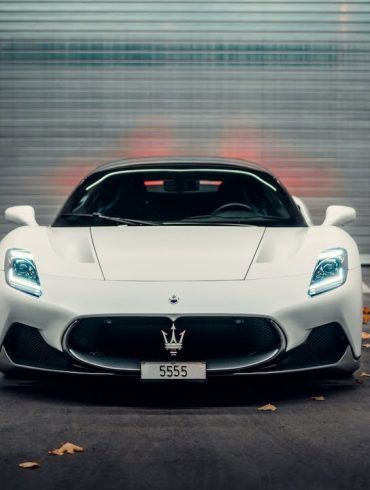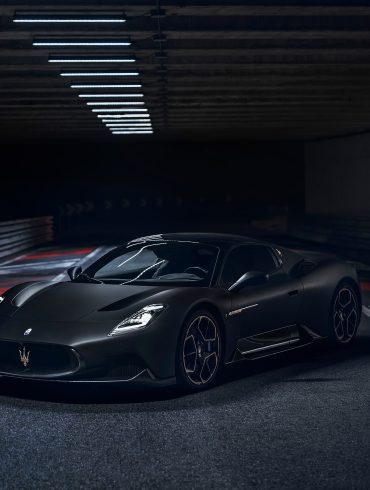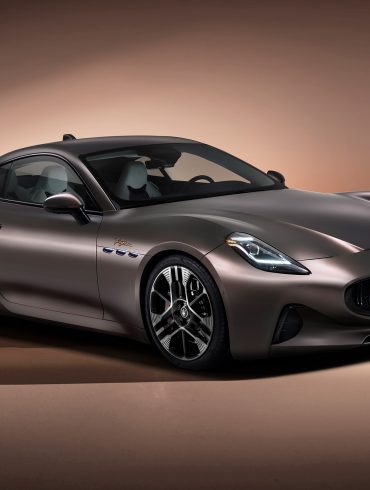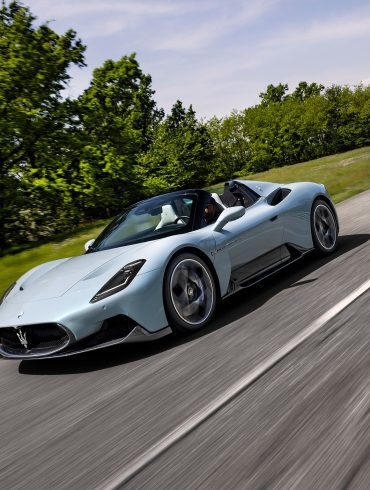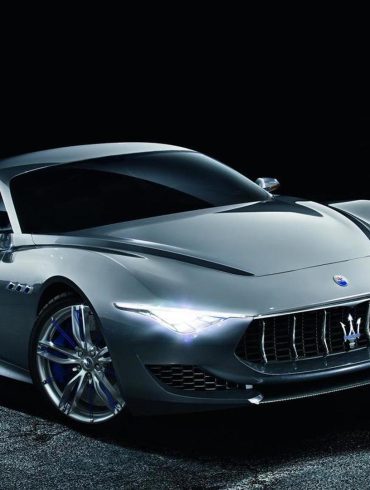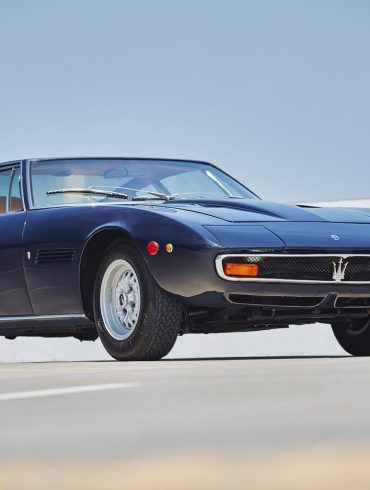1966→1970 Maserati Mistral Simply labelled “2 Posti” (or even “Berlina 2 Posti” as Road & Track still stated in 1964), it took the Mistral name following the suggestion of the French Maserati importer Colonel John Simone. Mistral is the name of a French wind blowing from the Mediterranean coast, and...
Maserati Mistral
1963 - 1970
Introduced in 1963 and named after the fierce Mediterranean wind, the Mistral swept through the automotive world, signaling a new era of design and engineering prowess for Maserati. This sleek, stylish grand tourer not only turned heads with its stunning bodywork, crafted by the legendary Pietro Frua, but also had potent performance, housing the last iteration of the celebrated inline-six engine that traced its lineage back to Maserati’s racing heritage.
Overview / Variants / Models In-Depth / Image Gallery / More Updates
Overview
Simply labelled “2 Posti” (or even “Berlina 2 Posti” as Road & Track still stated in 1964), it took the Mistral name following the suggestion of the French Maserati importer Colonel John Simone. Mistral is the name of a French wind blowing from the Mediterranean coast, and from this point onwards Maserati two-seater sports cars would be named after winds. 2+2 coupés would take the names of race tracks, the Sebring started this trend earlier that year.
The 1964 Maserati range was the most comprehensive yet, with the Mistral and Quattroporte joining the Sebring, 3500 GT and 3500 GT Spyder. The Mistral’s styling was an enormous success courtesy of Pietro Frua of Turin. The car was exceptionally innovative, with its air intake mounted underneath the front bumper, thus abandoning the traditional grille. Its high tail featured another interesting first: the tailgate. Large windows made the cabin very airy. Bodies were manufactured by Maggiora in Turin and finished at Officine Padane in Modena.
The majority of Mistrals were constructed in alloy, but from 1967 thy were replaced with a steel construction, with just the bonnet and doors remaining in alloy. The chassis – made of square-section tubes – was new, with a wheelbase of just 2.4 metres, 10 cm shorter than the Sebring and the Vignale Spyder.
The engine was increased to 3.7 litres, the same unit that would later be fitted to the Sebring, whilst the Mistral Spyder would initially be fitted with the 3.5 version, deemed sufficient for drop-top motoring. According to the original brochure, “twin ignition and indirect fuel injection offered exceptional power, smoothness and economy”. All Mistrals were fitted with disc brakes, whilst air conditioning, the 3-speed automatic transmission and a radio were optional.
The Mistral’s supremely elegant design was further enhanced by convertible offered in 1966. It was offered with a choice of either the 3.5 litre engine from the 3500 GT or the 3.7 litre variant, to which a further enhanced 4 litre unit was added a couple years later.
Already available in the coupé and in the Sebring, it became a somewhat less popular choice, when, in 1966 the new 4 litre unit was introduced. However, more than half of the Mistral Spyders assembled were produced with the 3.7 litre engine. A customer could specify an automatic gearbox on both the 3.7 and 4.0 litre versions.
Wire wheels came as standard, but from 1967 light alloy wheels similar to those on the Ghibli became available. Maximum speed was around 250 kph (156 mph). Italian actors Alberto Sordi and Ugo Tognazzi figured amongst Mistral Spyder owners. Overall, 125 Mistral Spyders were assembled between 1964 and 1970, 20 of them were right hand drive models. In 1968 the Mistral Spyder became the most modern car ever to win the Best in Show award at the prestigious Pebble Beach Concours d’Elégance.
Maserati Mistral Basics
Manufacturer: Maserati
Also called: Maserati 2 Posti, Maserati 4000 GT
Production: 1963-1970
Produced: 953 units
Designer: Pietro Frua
Body style: 2-door 2-seat coupé & spyder
Layout: Front-engine, RWD
Engine: 3.5 L Inline 6, 3.7 L Inline 6, 4.0 L Inline 6
Transmission: 5-speed manual
Wheelbase: 2,400 mm (94.5 in)
Length: 4,500 mm (177.2 in)
Width: 1,675 mm (65.9 in)
Height: 1,300 mm (51.2 in)
Kerb weight: 1,430 kg
Predecessor: Maserati 3500 GT
Successor: Maserati Ghibli
Did You Know?
The sleek and elegant Maserati Mistral was designed by Pietro Frua, a renowned Italian coachbuilder. Its design is considered a timeless classic of automotive beauty.
The Mistral gets its name from a powerful, cold wind that blows in southern France. It was the first Maserati to be named after a wind, a tradition that continues with models like the Ghibli and Levante.
The Mistral was the final Maserati to feature the company's legendary straight-six engine with dual overhead cams. This engine had a distinguished racing pedigree, even powering the famous Maserati 250F Formula One car.
The Maserati Mistral (Tipo 109), named after a cold northerly wind of southern France, was the successor to the iconic 3500 GT, it was also the first in Maserati to be given the name of a wind.
Supercars.net
Maserati Mistral Variants
A first prototype of the Mistral was presented at the Turin Motor Show in the autumn of 1963, but production did not start until 1964. Available with Maserati’s race-bred inline-6 engine, it could be specified in 3.5-liter, 3.7-liter and, later, 4.0-liter displacement. All cars were fitted with mechanical fuel injection from Lucas. The body was steel, but the doors, hood and rear window frame were made from aluminum to reduce weight. A convertible version of the Mistral was presented at the Geneva Motor Show in March 1964. It was an elegant interpretation by Giovanni Michelotti of the original coupe, with bodies built by Vignale in Turin. Mistral Spyders were predominately steel-bodied, with the hood, doors and trunk lid in aluminum. A very rare optional hardtop was also produced in aluminum. Only 124 units of the Mistral Spyder were produced, and today the model counts as one of most rare and sought-after classic Maserati GT cars.
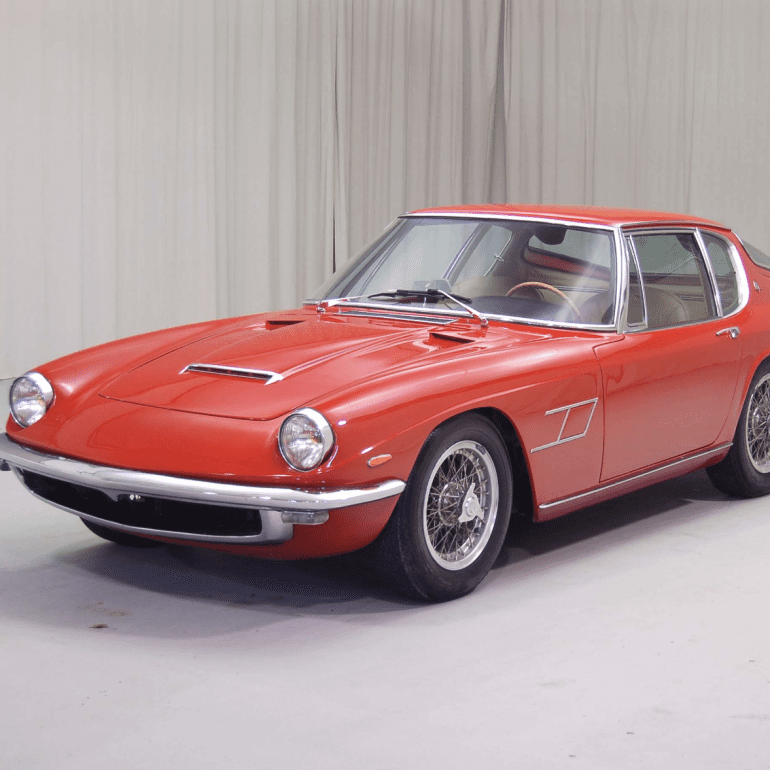
Maserati Mistral 3.5
Model: Tipo AM109.A1
Years: 1964
Produced: 3 units
Engine: 3,485 cc Straight 6
Power: 235hp @ 5,800rpm
Top Speed: 158 mph
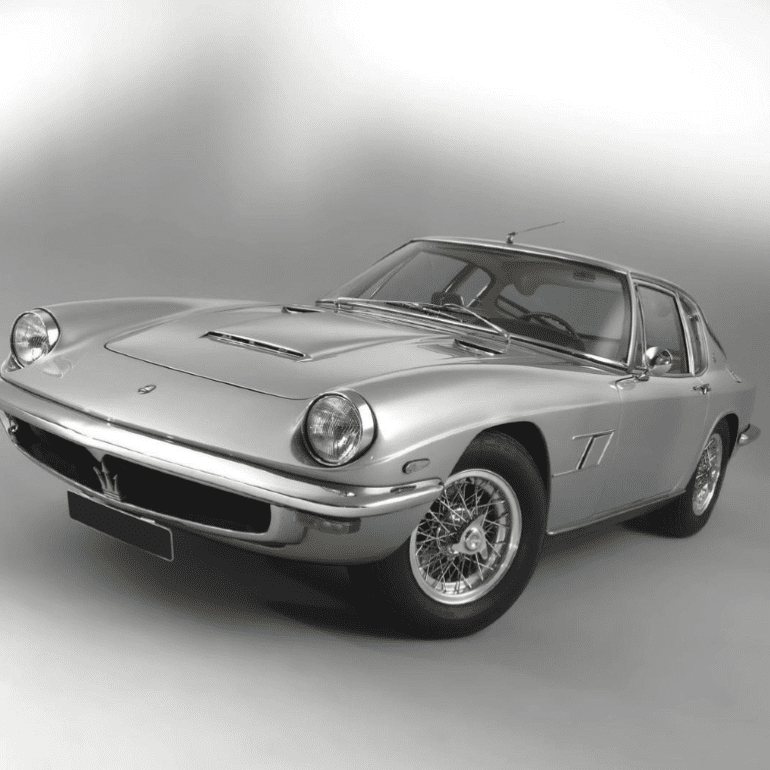
Maserati Mistral 3.7
Model: Tipo AM109.S1
Years: 1964 - 1969
Produced: 387 units
Engine: 3,694 cc Straight 6
Power: 245hp @ 5,800rpm
Top Speed: 158 mph
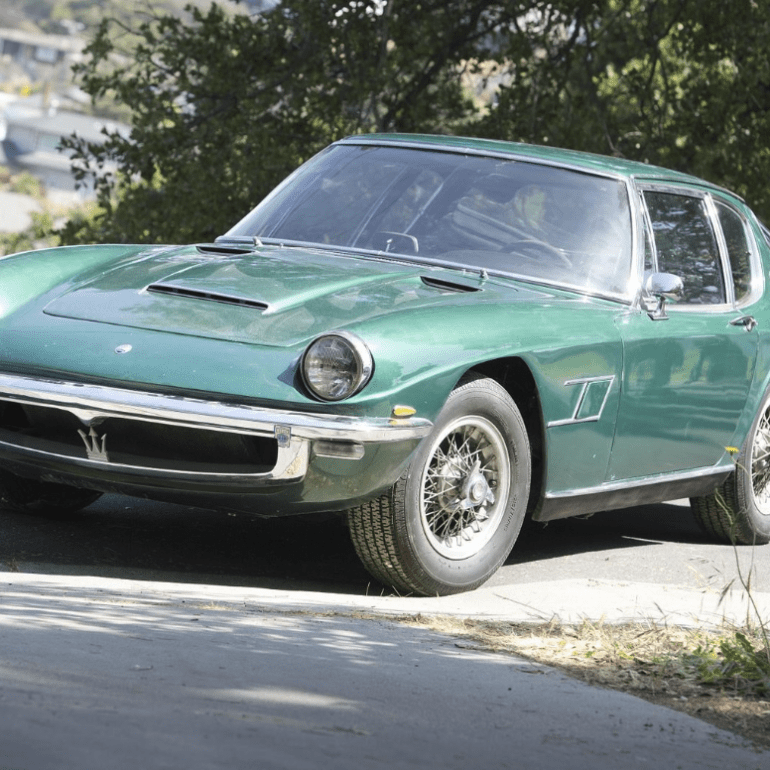
Maserati Mistral 4.0
Model: Tipo AM109.SA1
Years: 1965 - 1969
Produced: 454 units
Engine: 4,014 cc Straight 6
Power: 265hp @ 5,200rpm
Top Speed: 158 mph
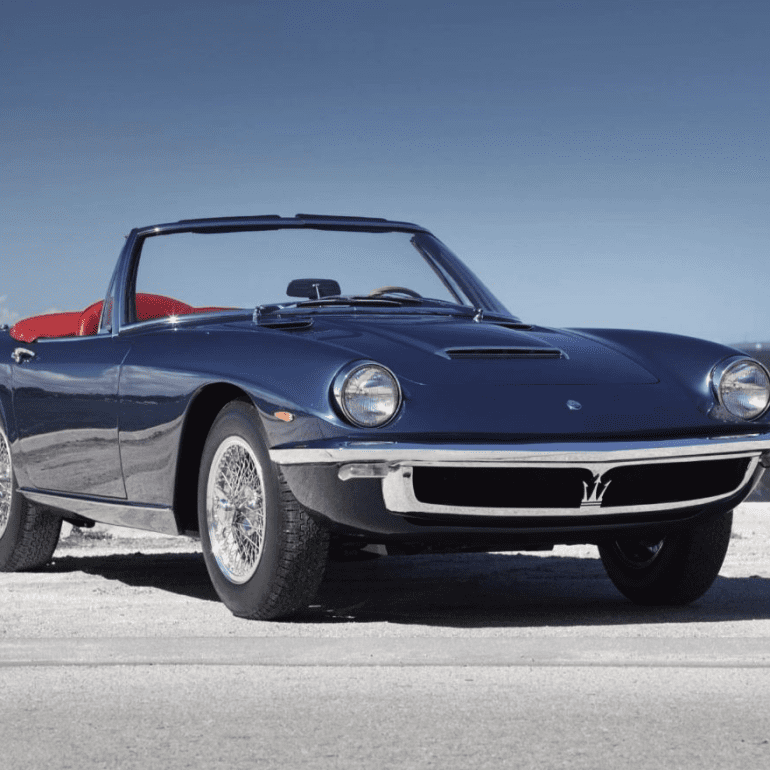
Maserati Mistral 3.5 Spyder
Model: Tipo AM109.A1
Years: 1964 - 1966
Produced: 27 units
Engine: 3,485 cc Straight 6
Power: 235hp @ 5,800rpm
Top Speed: 158 mph
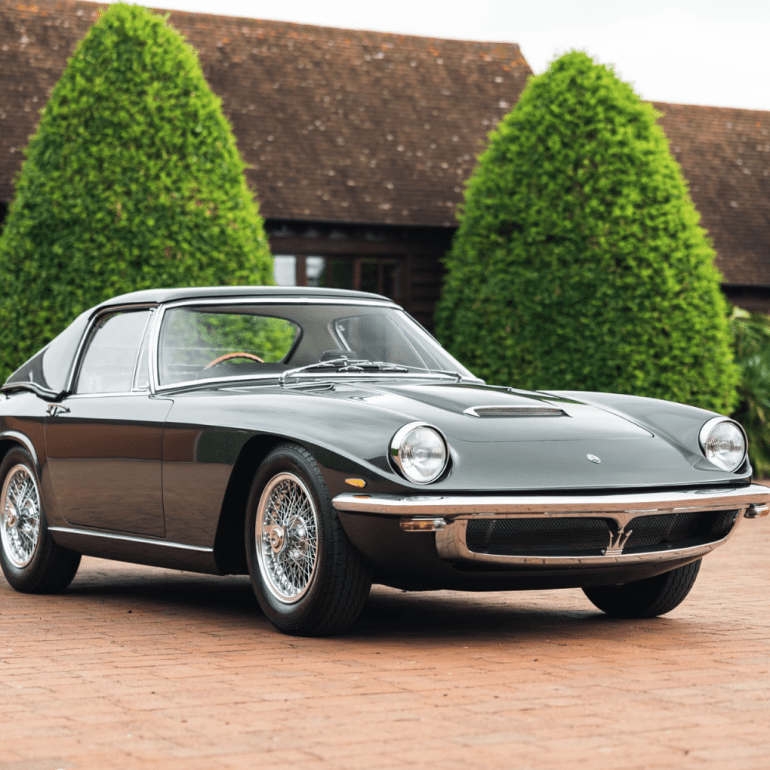
Maserati Mistral 3.7 Spyder
Model: Tipo AM109.S1
Years: 1964 - 1969
Produced: 46 units
Engine: 3,694 cc Straight 6
Power: 245hp @ 5,800rpm
Top Speed: 158 mph
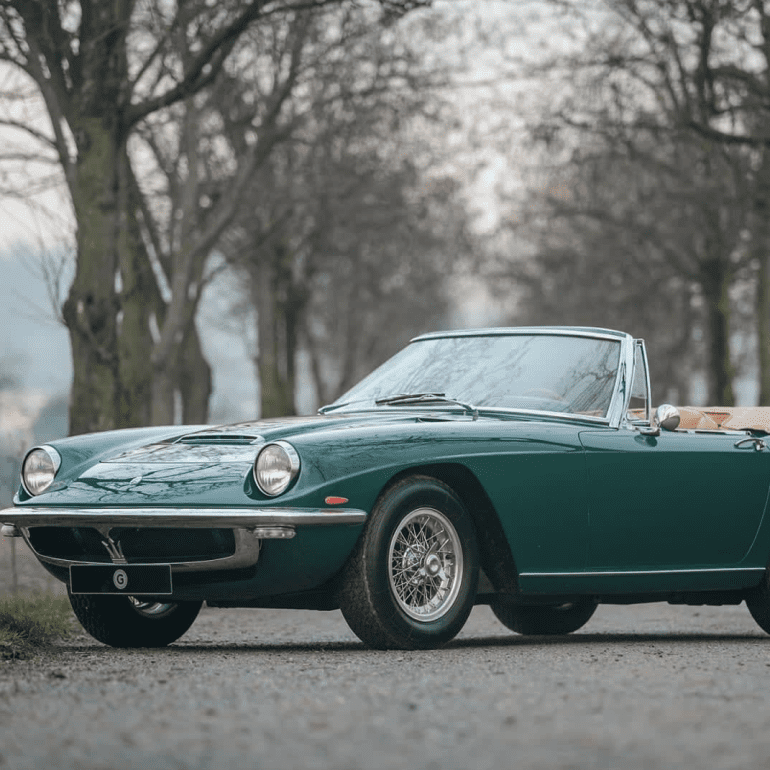
Maserati Mistral 4.0 Spyder
Model: Tipo AM109.SA1
Years: 1965 - 1969
Produced: 51 units
Engine: 4,014 cc Straight 6
Power: 265hp @ 5,200rpm
Top Speed: 158 mph
The last model from the “House of the Trident” to have the famous straight six cylinder, twin-spark, double overhead cam engine, as fitted to the Maserati 250Fs that won 8 Grand Prix between 1954 and 1960 and one F1 World Championship in 1957
Sports Car Digest


